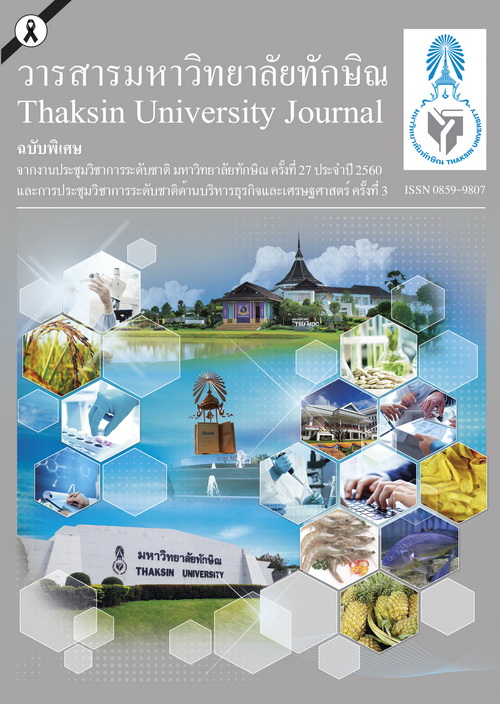Kinetics and AmmoniaTreatment of Sediment from White Shrimp (Litopenaeus vannamei) Pond
Main Article Content
Abstract
The major sources of nitrogen input to shrimp pond are leftovers and organic waste excreted from shrimp. The wastes are accumulated at the pond bottom. Microorganisms at the surface of pond bottom soil play an important role in
nitrogen conversion processes. The purpose of this research was to evaluate the efficiency of ammonia treatment using sediment from shrimp pond located in Thamai, Chanthaburi Province, Thailand. This pond (approximately 7 Rai or 1.12 Ha) had the shrimp production of 12 tons of shrimp per crop. Sediment was immediately collected after shrimp harvesting. Then, sediment was packed into the experimental tanks with 10 cm depth (0.37 m2), gradually filled with 20 L synthetic wastewater (30 ppt) and continuously aerated for 40 days. Experiment on ammonia treatment was conducted using various ammonia concentrations i.e. 0, 10, 20, 30, 40 and 50 mg-N/L. With 50 mg-N/L ammonia addition, the highest ammonia treatment rate at 8.75 mg-N/L/day was detected which was significantly higher than other treatment tanks (P 0.05). For all treatment tanks, the complete nitrification of the sediment occurred in 28 days incubation as the ammonia and nitrite were nearly eliminated while nitrate was remained at low concentration (< 7.97 mg-N/L). The calculation of the maximum ammonia removal rate (Vmax) was 18.18 mg-N/L/day and Ks was 92.41 mg-N/L. Ammonia removal kinetics of sediment can be further used to evaluate the carrying capacity of shrimp pond.

